Our 3D modeling service simplifies camera selection and placement by determining camera requirements and installation locations and helping with model selection.
"Rotate about three degrees to the left. Yes! That's it. We're done." Within less than 2.5 hours, a team of two employees of SBB, the Swiss Federal Railway, and Parquery had just configured, installed, and tested six cameras and solar panels. These have since provided SBB with insights into how their parking area is used.
The smart parking pilot project of SBB and Parquery has been running on SBB’s park and ride (P+Rail) facility in Rapperswil, in North-East Switzerland, since May 2020.
Parquery’s smart parking solution monitors available and occupied parking spaces in real-time using cameras and Artificial Intelligence (AI). It collects statistical data on parking behavior and usage that helps SBB optimize their parking space and supports operational planning. Up-to-date occupancy information is now also available on a preview P+Rail web app, so their customers know if they will find a free parking space before they even set off.
Learn more about the P+Rail web app
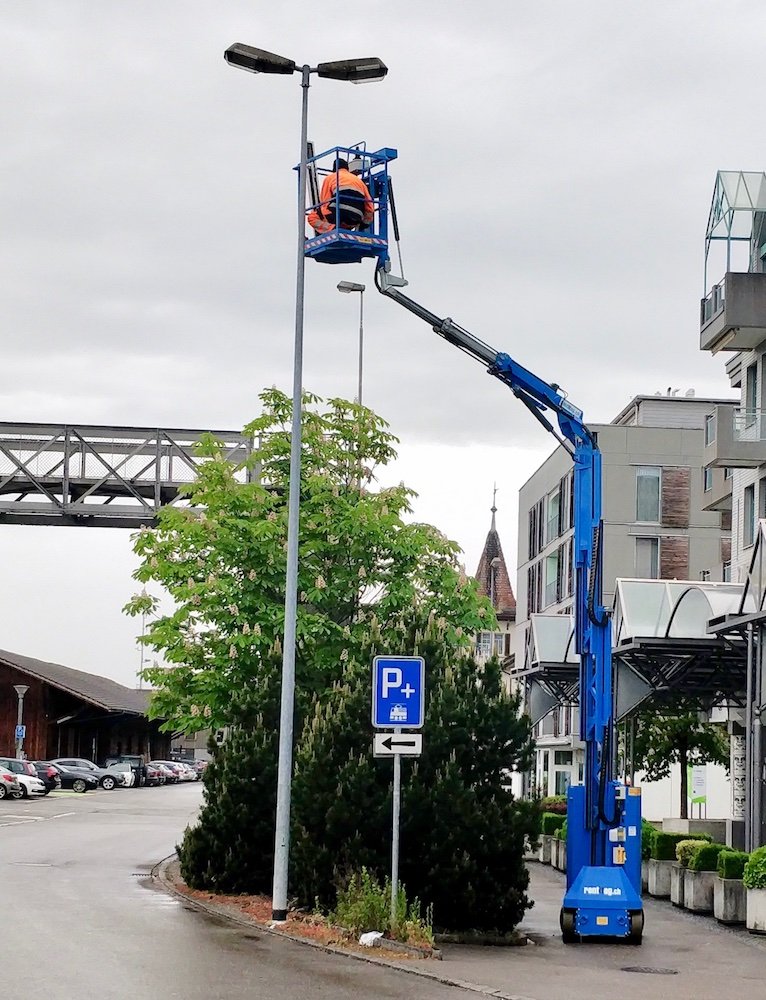
Finding the optimal camera arrangement for a parking lot is a non-trivial problem: The camera views have to encompass the entire parking lot while excluding neighboring premises and minimizing the number of cameras. A range of constraints have to be accounted for:
the shape of the parking area,
the spatial arrangement and orientation of the parking spots within it,
where, how high, and how cameras can be mounted,
which cameras to choose,
how to supply the cameras with power and network connections,
how to work around obstacles such as trees, overhanging roofs, or buildings,
and finally, how to ensure privacy and data protection.
Using a map of the parking lot and additional information, such as potential installation locations and heights, Parquery creates a 3D model of the parking lot. It models the parking layout and its constraints, such as trees, obstacles, possible camera installation points, ceiling heights, etc. Based on this model, we determine the number of cameras needed and where to install them and can test several camera models to achieve optimal coverage.
This allows us to solve the tricky question of where to place how many and which cameras, i.e., optimising the coverage with the minimum number of cameras and constraining the camera views to the area to monitor.
3D modelling is efficient, fairly accurate, and without risk. In the first stage of the planning process, they provide the necessary information about the required hardware and setup, and facilitate planning and budgeting accordingly. In addition, potential risks such as occlusions and edge cases can be evaluated and accounted for in advance.
Moreover, they allow exploring different options and scenarios, e.g., considering a range of camera models or mounting locations.
Furthermore, the rendered camera views allow verifying what will be monitored. Thus, one can appraise and address potential privacy issues from the outset.
Finally, the cameras’ calibration, location, height, orientation, and tilt are defined in the 3D model. Thus, the installation on the premises and the configuration are fast, straightforward, and efficient.

During the installation process, a responsible of Parquery accompanies the installer on-site or remotely. They assist with and verify the configuration, and adjustments can be made right away.
SBB’s P+Rail facility in Rapperswil incorporated several factors that required a careful approach. Parquery’s assessment and 3D modelling provided SBB with information to evaluate the range of available options.
First and foremost, the shape of the parking lot - narrow and elongated - made effective camera coverage challenging. Furthermore, peripheral areas had to be excluded from the camera view, which increased the constraints.
Moreover, the layout of the parking lot limited installation points and influenced the camera choice. In this P+Rail facility, the spots are arranged in rows along the lot’s length. Accordingly, cameras with wide-angle lenses were installed along this axis facing across. Thus, vehicles are seen from the front or rear, reducing the risk of one vehicle concealing another.
Finally, the proximity to the railway infrastructure required additional safety considerations during installation and running, chiefly concerning traction current and rail traffic.
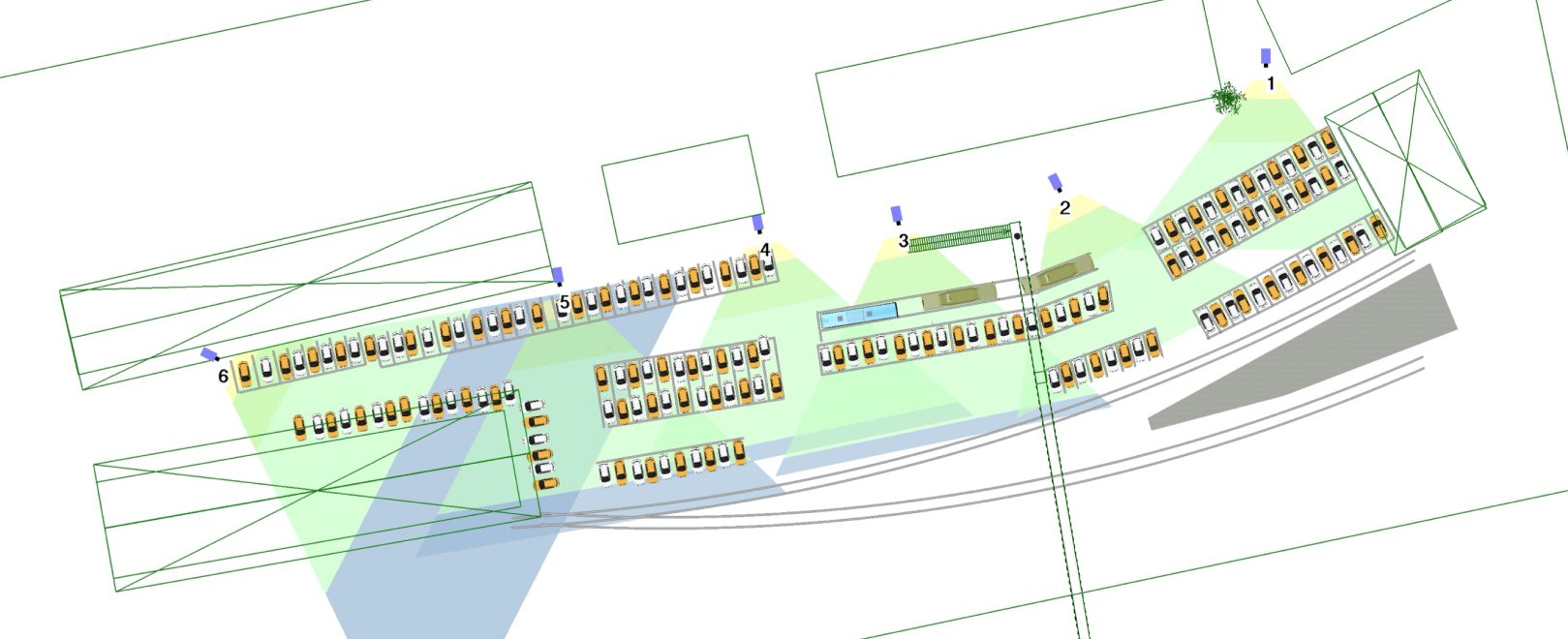
There were three choices for mounting the cameras, each with its particular constraints:
SBB rejected the first option due to safety concerns. The installation height was then the decisive factor between the remaining two choices: The higher mounting points on the municipal masts meant a lower risk of occlusions, fewer cameras, and, thus, also less visual impact.
The municipal light poles are to the North of the car park in full sunlight all day. Thus, the project team could solve the power supply question with solar panels that recharge the camera batteries during the day.
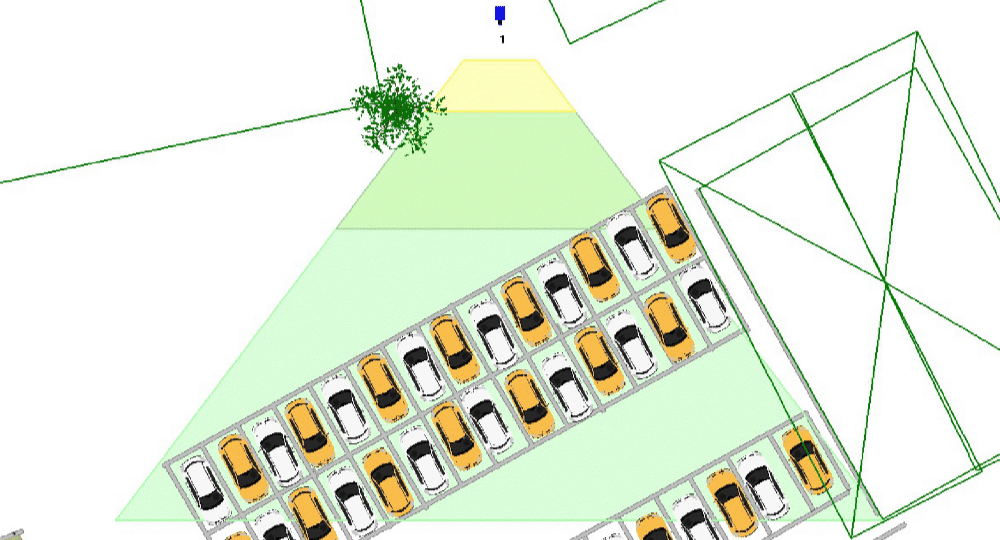
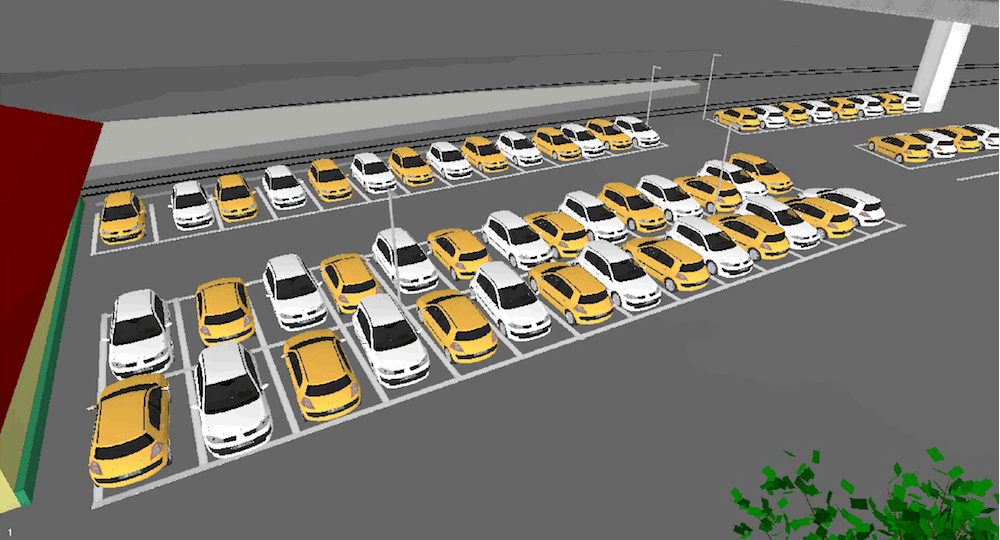
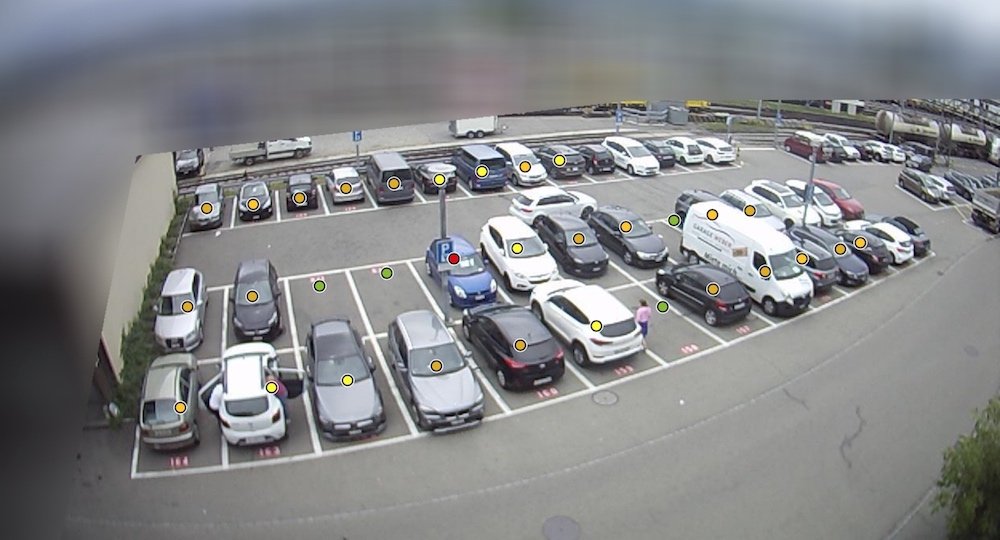

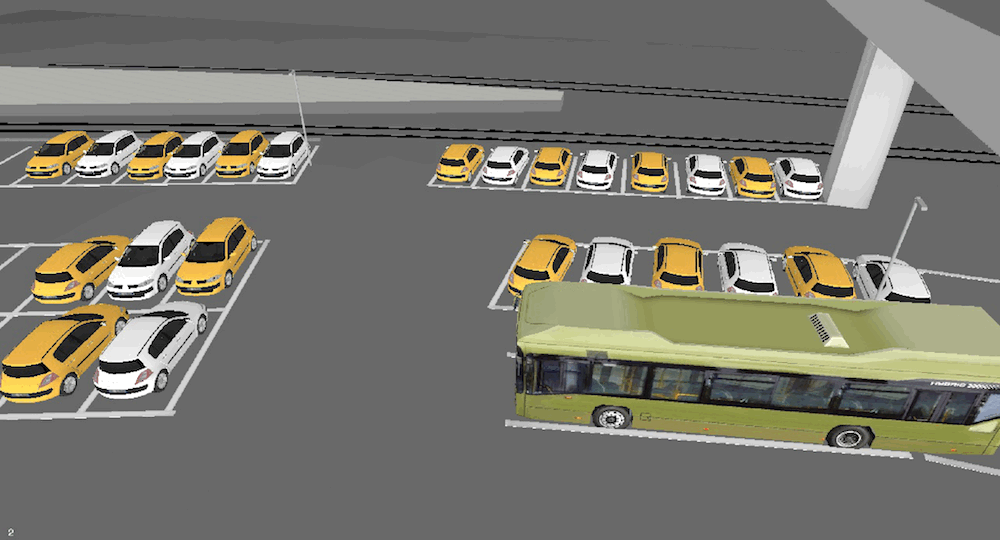

The rendered camera view in the simulation compared to the camera footage. Note how closely the views resemble one another. Observe that the neighboring train platform and building are automatically masked and blurred in the camera image. Thanks to the simulation, these privacy measures could be taken into account right from the start.
Beyond being a powerful tool for project planning and decision making, the 3D models also contribute to deploying a project swiftly. From the moment SBB’s innovation department contacted Parquery to the pilot being operational, it was only six months. That included feasibility assessment, 3D models for several scenarios, solving the question of power supply with solar panels, purchasing, assembling, configuring, and calibrating the hardware (cameras, solar panels, mounting brackets, batteries, SIM cards for data connection), obtaining authorizations from the local municipality, and administrative decisions on SBB’s side.
Having determined the camera configuration in advance by 3D modelling, the installation process was effortless. The mounting location and height, as well as the required orientation and tilt of the cameras were known, and thus quickly done. Additionally, Parquery’s employee on-site immediately verified that the camera footage corresponded accurately to the simulated views.
In no more than about 2.5 hours of taking the first one out of the box, all six cameras and solar panels were mounted, configured, and ready for operation by SBB’s installer under the guidance of a Parquery employee.
With the cameras in place, the first images arrived on Parquery’s cloud servers after only a few minutes. SBB could start using the parking occupancy data and provide up-to-date information about vacant parking spots to their customers. The 3D modelling facilitated both a smooth planning and installation process, and the models proved accurate.

Get started with Smart Parking on your parking facility.
More about SBB’s Park+Rail project
Explore real-time availability of parking spaces in P+Rail Rapperswil and other test locations.